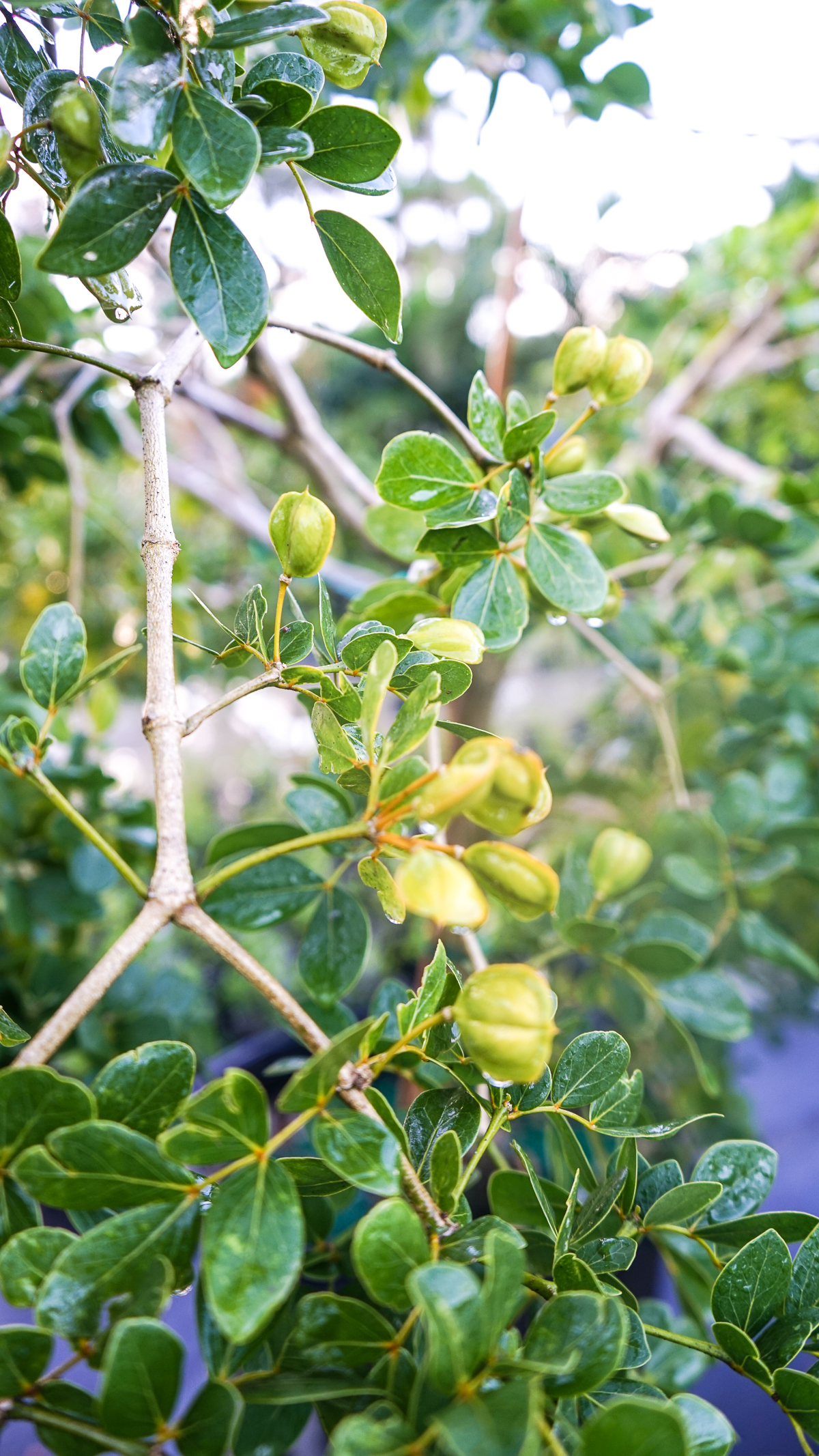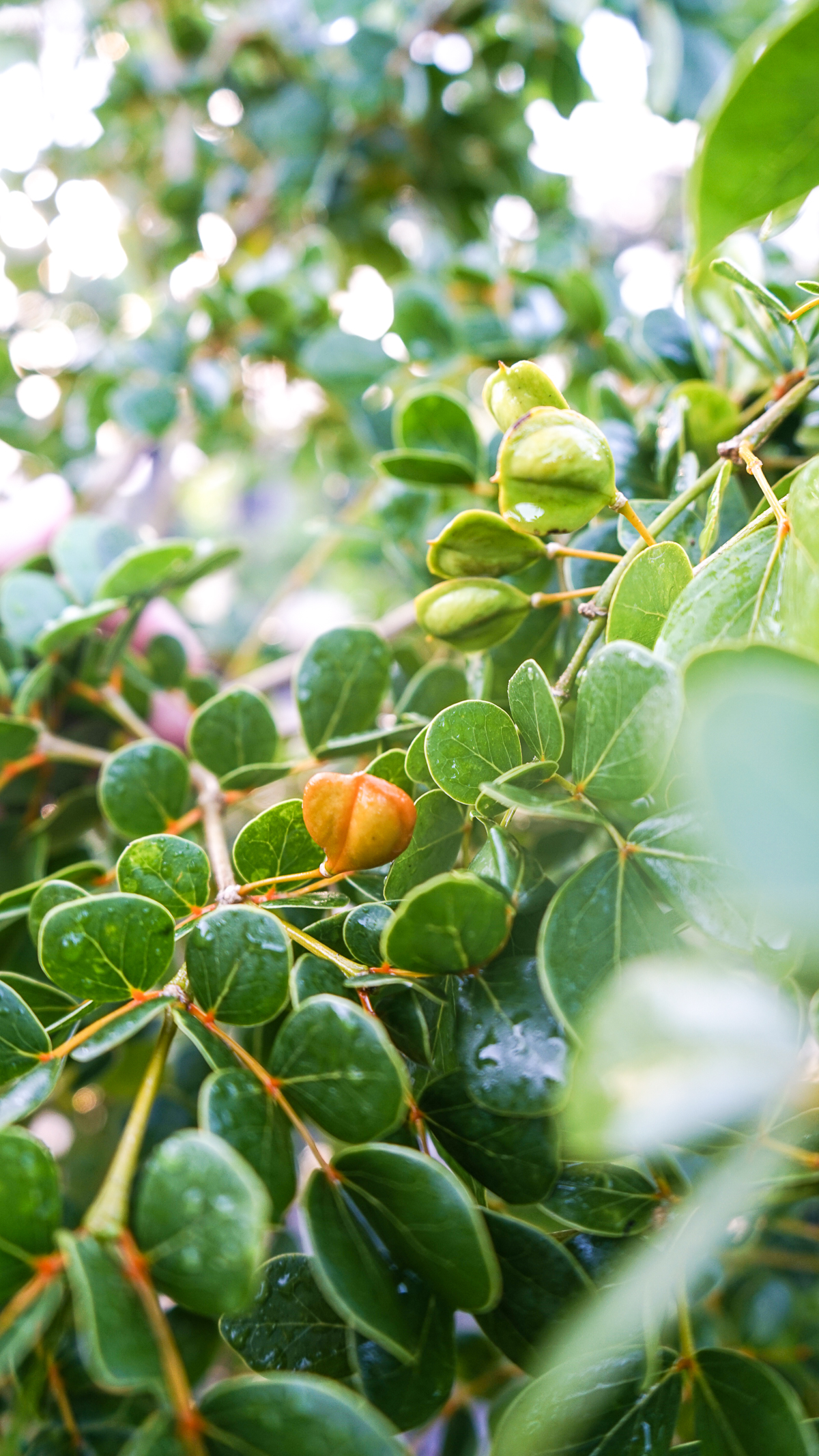Common Name Roughbark Lignumvitae
Latin Name Guaiacum officinale
Family Zygophyllaceae
Zone 10B-11
Height 8-12 Feet
Spread 8-12 Feet
Salt Water Tolerance High
Salt Wind Tolerance High
Drought Tolerance High
Soil Tolerant of most soil types
Sun Full to Partial Sun/Shade
Wildlife Attractant Bees
Nellis, David W. (1994) Seashore Plants of South Florida and the Carribbean 1st Ed. Pineapple Press. Inc.
Roughbark Lignumvitae Guaiacum officinale
Main Uses:
Due to the nature of this tree, it is considered one of the most hurricane resistant trees, making it perfect for Florida landscapes.
The Roughbark can be trimmed much like a bonsai tree, kept in above ground containers, or planted in your garden as an ornamental tree.
Its high tolerance to drought, salt, and discouraging soil conditions make the Roughbark Lignumvitae a great seashore and dry coastal plant
Appearance
Roughbark Lignumvitae is found in the West Indies and northern South America. Its relative, Guaiacum Sanctum Lignumvitae is native to Florida and the Caribbean.
Its seed pods are flatter than its relative G. Sanctum, ripening to an orange hue, followed by a blooming fragrant blue flower.
Historic Uses
On a historic note, it is said that the wood from the Lignumvitae was used by the Indians to treat syphilis. This created a demand for the wood back in Europe. For centuries, Europeans used the wood to treat syphilitic sores, and made tea with its leaves to treat asthma, arthritis, and high blood pressure.
Of course with high demand came over logging, resulting in almost a complete elimination of the species.





